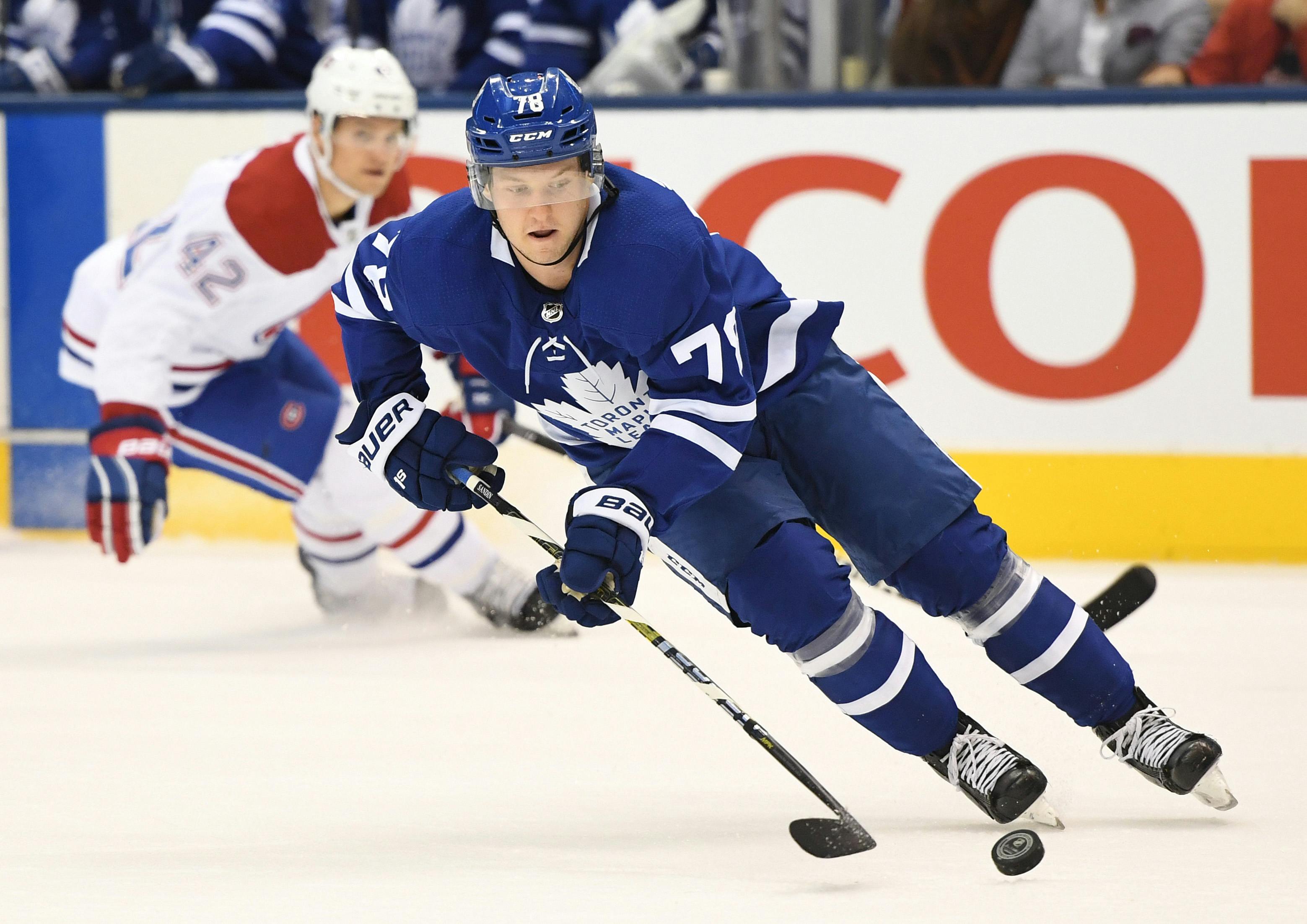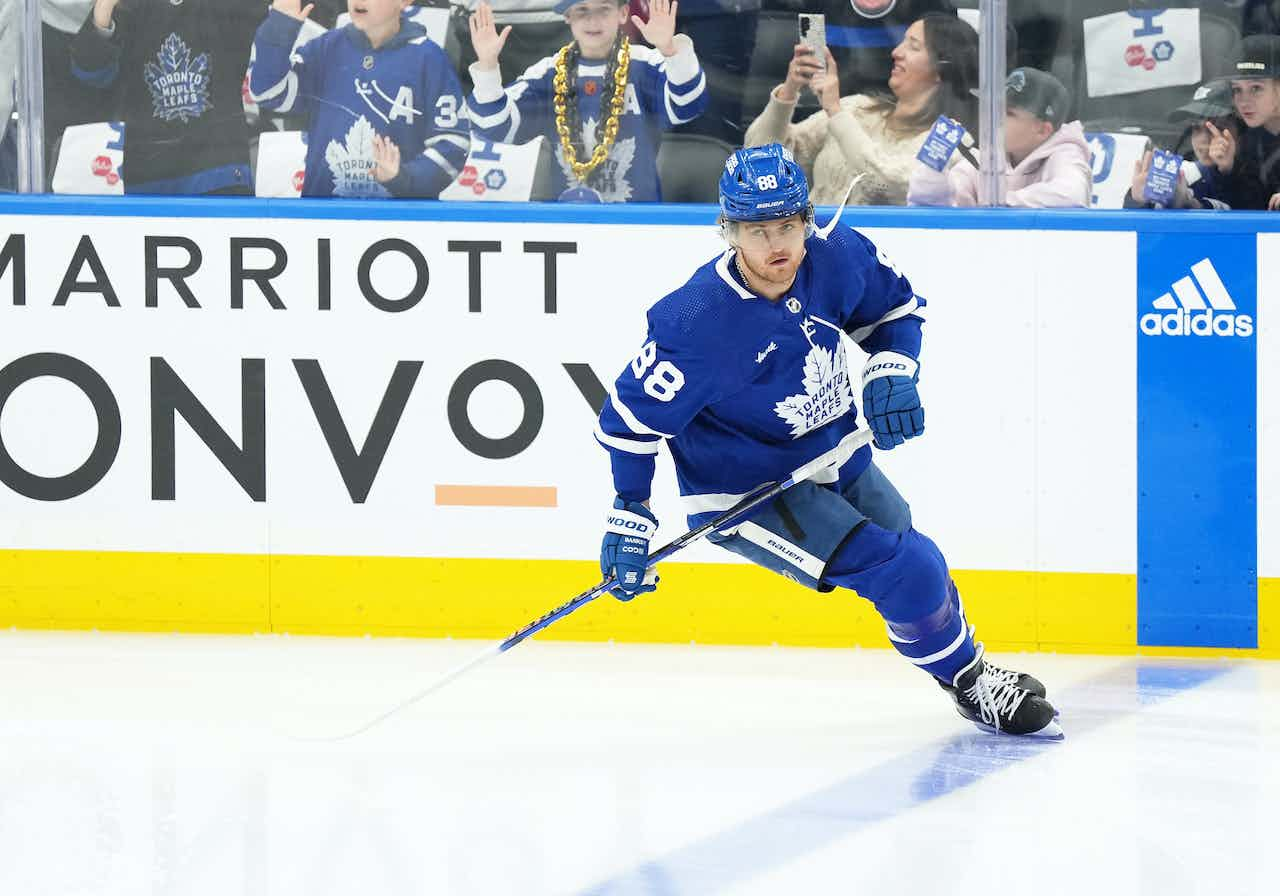Why Corey Pronman Ranked the Maple Leafs’ Prospect Pool 21st

The Athletic’s resident scouting guru, Corey Pronman, is releasing his NHL Prospect Pool Rankings day-by-day.
On Monday, he landed the Toronto Maple Leafs 21st out of the 31 systems in the NHL. That’s not great. And yet, considering that the team has made the playoffs for 3 straight years and didn’t have a first-round pick at this past draft, it was otherwise expected.
This is not a recap of “x person said this about the Leafs.” Rather, this is a breakdown of why the team is ranked where they are.
In assessing Toronto’s pipeline, Pronman says “the talent at the top is average, but I like the depth of the pipeline, as the Leafs have targeted a lot of skill in their prospects in recent years.” The last part of that sentence is a tip of the cap to the work Dubas and the scouting department has done thus far.
Every year, without fail, various fan bases begin hollering on social media about their team taking “the safe guy” instead of the one with the higher ceiling (who usually happens to be small and skilled). I have said this consistently, and I’ll say it again: draft me a player who has the skill/talent to be a home run pick, over a guy with less talent that’s a sure-fire 4th liner/6th D, every single time.
Case in point; draft the more talented guy over the bigger guy.
And, for the sweet love of God, if you find yourself drafting for the “character/intangibles” of a 17- or 18-year old? Well, that’s not a great predictor of success. Remember how Leafs management raved about Tyler Biggs’ character back in 2011, and ugh…yeah.
People, especially males, go through some huge personality changes between the ages of 17-24. So maybe, just maybe, don’t just axe a kid off your list because he’s “not a character guy.” With that said, kudos to the Leafs for drafting skilled players, and not necessarily the low risk/low reward players of years past.
Anyway, back to the draft picks.
Assessing the Leafs’ System
The Leafs don’t have an A+ prospect in their pipeline at the moment. Those guys are already in their lineup in the form of Matthews, Marner, and Nylander. But, as Corey noted, considering the strides that Sandin and Bracco made last season, there are things to be excited about.
I’ll admit, I really liked the Sandin pick last year, and I didn’t expect to see the developmental explosion he ultimately had in 2018/2019. Defensemen usually take 2.5-3 years to develop into contributing NHL players, as most go back to junior/Europe in their D+1 year. Sandin not only stepped directly into the AHL, he cemented himself as a key cog for the Toronto Marlies and Sheldon Keefe down the stretch.
Sandin is in the mould of a modern-day NHL defenceman. He skates well, angles players even better, and is very positionally sound. In today’s game, all of those attributes are key. Not only did Sandin effectively jump Liljegren on the depth chart, but he’s also probably earned himself a longer look at Leafs camp.
Look for Sandin to get the Travis Dermott treatment – start off in the AHL, earn heavy minutes, and then get called up to the big club around the All-Star break.
As Pronman lays out, the top end of Toronto’s pipeline is average. And, when accounting for everything after Sandin, I would agree with that assessment. Bracco is largely a perimeter player, but his offensive skill may help him earn a spot on a 2nd PP unit and skilled third line. That probably won’t happen this season, though.
Timothy Liljegren is a bit of an enigma, to be honest. The Swede was drafted as what many saw to be this creative, offensive defender who was going to quarterback your power play, while needing to work on the defensive side of his game.
Fast forward, and Liljegren’s play in the defensive zone has developed him into a very trustworthy option in his own end, but he seems to have lost the ability to create offensively in the process. While I don’t think the clock struck midnight and his offensive skills simply turned into a pumpkin, this is concerning nonetheless.
The 2018/19 season saw Liljegren show flashes of that skill, and make great seam passes to find players cross-ice or down low. In the long run, I think he’s a possession driving, zone exit, reliable, 2nd pairing guy.
The Leafs biggest addition is Nick Robertson. I will have a full breakdown on him coming the first week of September, complete with video!
The Coles Notes on Robertson: he’s a high-end skill guy…but he’s also 5’9. He didn’t have the best statistical year in the OHL, but if you watched him play, he routinely made something out of nothing. Not to mention, he’s got a knack for getting the puck off the bigger guys because he knows how to position himself to either get the puck or draw a penalty.
Look for Robertson to contribute to the Leafs in roughly 2-3 years. He’s exactly the type of player the Leafs will need to produce on his ELC in their current contending window.
In goal, the Leafs have two meaningful prospects, one of which has a legit chance to be a starting goalie in the NHL.
Here’s the benefit of having both Joseph Woll and Ian Scott: the NHL, if they listen to sports scientists (and they should), is going the way of the 1A/1B goalie tandem. Andersen is not going to be able to start 65 games forever, and I’d argue, he shouldn’t start that many now. Down the road, having Woll and Scott split the games in a roughly “50/32” scenario is a real possibility. Both goalies are the same size, and in a game that is moving more and more towards skill, both move post-to-post very well. That will be key for backdoor plays.
Woll wasn’t as consistent as Scott this past season, but he has the higher ceiling. With the game favouring more goalie tandems, the Leafs have two guys who fit that exact mould, albeit if they continue to develop on their current trajectories.
Both Scott and Woll will play pro this year, and likely get time in the ECHL. The organization will want them to play versus having either sit on the bench in the AHL, and Dubas has been vocal about the relationship with the team’s ECHL affiliate in Newfoundland.
Neither goalie has the ceiling of league-best prospects like Samsonov (WSH) or Shestyorkin (NYR), but each of them has the potential to be key parts of a successful tandem.
Favouring Depth
Where Pronman likes the Leafs pool more than others is the strength of their depth. This is where I whole-heartedly agree with him.
The Maple Leafs organization has done a terrific job of drafting for talent and letting their development staff/AHL staff mould their players into future Leafs. Semyon Der-Arguchintsev and Adam Brooks are both examples of that. The sudden upswing of Pierre Engvall was a definite contribution to this lauded depth, as he’s become a legitimate 4th line consideration for the Leafs.
In his ranking, Pronman has Mason Marchment lower than I otherwise would, but Leafs fans are intimately aware of Mike Babcock’s passion for a BIG, hard-working, get to the dirty areas, mix-it-up-type player. If Marchment’s skating improves to the same level as the rest of his game, well, he’s 6’4 every night, has some offensive touch in net-front areas, and could be exactly the type of player the Leafs need on their 4th line.
In terms of his chance of playing in the lineup, I think he’s relatively high on their recall list.
Both Kalle Loponen and Mikko Kokkonen are picks from this year, with a few scouting lists ranking Kokkonen in the late 20s/early 30s. The concern with Kokkonen is his speed, mainly because he’s 5’11 and isn’t going to push anyone around. In the modern NHL game, if they call interference properly, you have to be able to skate to be an effective defenceman. The Leafs have shown they can fix skating. Frankly, they have Barb Underhill to thank for that.
As Pronman said, Kokkonen defends tight, checks well, and makes good decisions. All of those are key to success. If Kokkonen gets his skating in order and develops steadily, his ceiling is likely that of a 4/5 defensemen with the Leafs. I think Loponen is likely an AHL D when all is said and done, primarily because he has great hockey sense, skates well, but doesn’t make any of the special plays that catch your eye. I could see him panning out as a T.J. Brennan type.
Some other players I think are a key reason as to why Pronman likes the depth of the prospect pools include Adam Brooks, Mike Koster, Teemu Kivihalme, Joseph Duszak and Mac Hollowell.
Not only have the Leafs drafted for skill over the past few seasons, but they’ve really made an effort to stock their defensive cupboard. Each of Hollowell, Duszak, and Koster had fantastic individual seasons, albeit all coming in college/junior. They all measure in at 5’10 or smaller which, again, doesn’t bode well for the current NHL landscape. However, the Leafs are banking on the continued trajectory of change toward these smaller skilled players to make room for this type of defensemen.
The trend with a lot of these defensemen is they all have a high hockey IQ, are good decision-makers, have shown the ability to transition the puck effectively, and yet still carry questions about their respective skating ability.
The Maple Leafs organization seems to be banking on the fact they can improve upon these skating deficiencies, while teaching the natural ability to make decisions, learning capacity, and IQ is far more challenging. I would agree that of those 4 attributes, the easier of the bunch to develop is skating.
If the Leafs can nurture the progress of their prospects’ skating, they will likely have some tough decisions in a few years necessitated by an overcrowded blue line. The thing about those defensemen is, if their skating does improve, they have a much higher ceiling than prospects for other teams thanks to their already-existing skill.
Is the Ranking Accurate?
Overall, I would agree with Pronman’s assessment of the Leafs prospect pool.
The key for the organization is for their prospects to develop their skating. The Leafs have done a terrific job of drafting skilled, higher ceiling players whose only weaknesses are the kind susceptible to improvement. Should these prospects develop and reach their respective ceilings, there are more than a few players who could see meaningful NHL time (play 200 games), whether it is with the Leafs or used the way Carl Grundstrom was to be leveraged in exchange for an impact roster player.
There may not be any superstars in the making, but Sandin, Robertson, and the potential goalie tandem should have Leafs fans very excited.
Recent articles from Rachel Doerrie





